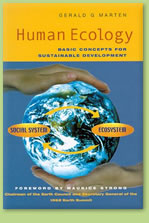EcoTipping Points
- How do they work?
- Leveraging vicious
cycles to virtuous - Ingredients for success
- Create your own
EcoTipping Points!
Stories by Region
- USA-Canada
- Latin America
- Europe
- Middle East
- South Asia
- Southeast Asia
- East Asia
- Africa
- Oceania-Australia
Stories by Topic
- Agriculture
- Business
- Education
- Energy
- Fisheries
- Forests
- Public Health
- Urban Ecosystems
- Water and Watersheds
Short Videos
- Saving a Coral Reef and Fishery (Apo Island, Philippines)
- Community Gardens Reverse Urban Decay (NYC, USA)
- Community Forests Reverse Tropical Deforestation (Thailand)
- Escaping the Pesticide Trap (India)
- Rainwater Harvesting and Groundwater Replenishment (Rajasthan, India)
How Success Works:
- Saving a Coral Reef and Fishery (Apo Island, Philippines)
- Community Gardens Reverse Urban Decay (NYC, USA)
- Community Forests Reverse Tropical Deforestation (Thailand)
- Escaping the Pesticide Trap (India)
- Rainwater Harvesting and Groundwater Replenishment (Rajasthan, India)

Human Ecology:
Principles underlying
EcoTipping Points
Something Fishy
- Teacher: Debbie Trogdon-Stout
- Download Something Fishy (Microsoft Word format)
- Return to main For Teachers page
Grade Level/Subject: (9-12)
Overview:
This lesson affords students an opportunity to synthesize what they have learned about the anatomy of fish with their knowledge of ocean ecosystems, human interaction, EcoTipping Points, and an organism’s methods of adapting to survive (or not). The problem can be expanded to include other sea creatures and marine habitats/environments.
Objective:
- Adaptation as a function of preservation.
- Fish anatomy.
- The ocean as an ecosystem.
- Tipping points and human interactions with fish populations.
Activities and Procedures:
After creating the ocean descriptors, individually, then as a class, students will brainstorm in fifteen minutes or less, many, different, and unusual adaptive characteristics and behaviors. Ideas are then categorized.
- Students will narrow the specific characteristics of their fish’s environment.
- Using the generated adaptive characteristics and behaviors as a resource, students will identify adaptations that will influence characteristics of their fish. They will then collect materials needed to make a model.
- Students will make a model and name it.
- Fish models will be labeled, presented, and displayed in a synthesized environment.
Optional:
Following presentations of fish, students might arrange their creations in a food chain or web of the future.
Student Motivation:
Show slides of several species of fish. In the way of review, have students verbally identify parts of anatomies and adaptive characteristics. Next say: "The year is 2045. Since the turn of the century, pollution, over fishing and global warming have dramatically altered the characteristics of oceans." Ask students, through discussion, to come up with a composite of 10 characteristics that would describe the Pacific Ocean in 2025. List them on the board.
Problem:
Given the hypothetically evolved condition of the ocean, students will create a fish of the future, listing many, different, and unusual ways that their fish will adapt to survive. The student will name the fish and create a labeled model of it.
Academic Concepts/Objectives:
- Adaptation as a function of preservation.
- Fish anatomy.
- The ocean as an ecosystem.
- EcoTipping Points of how human actions will affect the populations of ocean dwelling creatures.
Evaluation:
- Many - Total number of adaptations listed.
- Different - Number of categories of fish adaptations listed.
- Unusual - One-of-a-kind ideas listed for fish adaptations.

